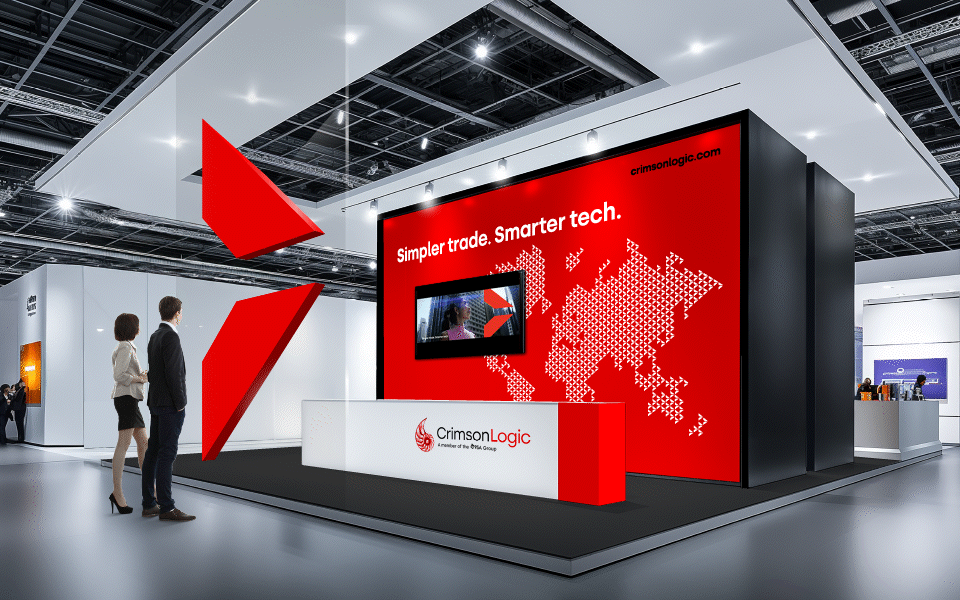Understanding the Importance of Brand Design
Boost brand design to establish identity, create emotional connections, and differentiate in markets. Build loyalty and command premium pricing. Click to elevate your brand today!

Boost brand design to establish identity, create emotional connections, and differentiate in markets. Build loyalty and command premium pricing. Click to elevate your brand today!


In Singapore, you have three seconds. Three seconds before a consumer scrolls past, three seconds before a competitor outshines you, three seconds to prove you're worth remembering. In one of Asia's most saturated, sophisticated markets, brand design isn't decoration: it's defence, differentiation, and declaration all at once.
Brand design is the architecture of perception. It's your visual identity (logos, colours, typography), your experiential touchpoints (packaging, digital interfaces, physical spaces), and the messaging that ties it all together. It's how you look, how you feel, and what you stand for, compressed into every interaction.
For businesses targeting Singapore's discerning, digitally native audience, strong brand design does more than attract attention. It commands trust, communicates value, and carves out mental real estate in a city where everyone is competing for the same glance. In this article, we will discuss the importance of brand design and how you can ace it.
Quick Takeaways from the Blog:
Walk down Orchard Road. Scroll through your Instagram feed. Open your email inbox.
What do you see? A sea of sameness. Brands desperately shouting for attention, yet somehow all sounding identical. But here's what most founders get wrong: they think brand design is about making things "pretty."
It's not.
Brand design is your silent salesperson. It's working 24/7, making split-second decisions about whether someone trusts you enough to click, engage, or make a purchase. And in Singapore's hyper-connected, digitally savvy market, you have exactly three seconds to make that case.
Is your brand getting lost in three seconds? Get a Brand Design Audit from Vantage and check out what else we do today.
Let's clear something up. Brand design isn't just your logo and colour palette. That's like saying a person is just their face and shirt.
Real brand design is a full ecosystem:
Also Read: Exploring B2B Brand Archetypes: Examples and How-Tos
In most markets, good design is an advantage. In Singapore, it's the entry fee. Here's why this city-state makes brand design not just important, but absolutely critical to your survival.
In a market this sophisticated, consumers make instant judgements. Bad design doesn't just look unprofessional (it screams: "We don't care about details." And if you don't care about your own brand, why should they care about your product?
Think about Singapore's most successful brands (whether it's local heroes like BreadTalk or global giants like Grab. What do they have in common? You recognise them instantly, across every touchpoint. Their Instagram profile resembles their app, which resembles their store, and matches their delivery bag.
That's not an accident. That's design discipline.
In a crowded market, bland design forces you into the only competition you can't win: price. When everything looks the same, customers default to whoever's cheapest. Strong design lets you charge premium prices because you're not selling a commodity (you're selling an experience.
Remember Singapore's "Passion Made Possible" campaign? It didn't just rebrand a nation (it showed how strategic design could communicate complex ideas simply and memorably.
Here's where it gets interesting. Singapore isn't monolithic (it's a beautiful collision of cultures, languages, and expectations. Your design needs to speak to all of them without diluting your message.
Colours mean different things across ethnic groups. Language choices matter. Even your font selection sends cultural signals. Nail this, and you're not just another brand (you're their brand.
Everyone knows bad design looks unprofessional. But the real damage runs much deeper (and it's costing you customers, revenue, and market position in ways you might not even realise.
Poor design doesn't just fail to attract customers (it actively repels them. That outdated logo? It tells people you're stuck in 2010. That inconsistent Instagram grid? It whispers, "We don't have our act together." Those mixed messages across platforms? They scream, "We don't know who we are."
When your website looks nothing like your social media, which looks nothing like your packaging, you're not building a brand (you're building confusion. Customers can't remember you because you keep showing up differently. That's brand equity evaporating in real-time.
Design that ignores Singapore's multicultural reality creates an invisible barrier between you and potential customers. It's not intentional (but intention doesn't matter when you've already lost the sale.
The biggest mistake? Treating design as something you do after the real work is finished. Design should inform product development, customer experience, operations (everything. When it doesn't, you're leaving money on the table.
Also Read: Strategic Branding: Definition, Guide, and Importance
Forget the theory. Here's your practical roadmap for creating brand design that doesn't just look good (but actually drives business results in one of the world's most demanding markets.
Before you touch a colour wheel, answer these questions:
Your brand isn't for you, it's for your customers. Understand their digital habits, language preferences, and cultural touchpoints. Test your designs with real users, especially across different demographic segments.
Create design guidelines and actually follow them. Every email, every social post, every customer touchpoint should feel like it came from the same brand universe.
Make design a core business function, not an afterthought. Train your team on brand standards. Make design thinking part of your culture. When design is everyone's job, magic happens.
Adapt to Singapore's multicultural context while maintaining your core identity. This isn't about being everything to everyone (it's about being thoughtfully accessible.
Track brand recognition. Monitor trust metrics. Collect feedback. Great design isn't a one-time project; it's an ongoing conversation with your market.
Read More: Branding Agency vs Marketing Agency: Key Differences Explained
Think brand design only matters for consumer brands? Think again.
In Singapore's B2B market, design is your credibility shield. A polished website reduces perceived risk. Consistent visual identity signals professionalism. Clean UI suggests reliable technology.
Your prospects are making million-dollar decisions. Your design had better look like you're worth it.
[ ] Logo looks sharp on mobile screens and social media thumbnails
[ ] Typography is legible in English, Chinese, Malay, and Tamil
[ ] Colour choices are culturally appropriate and meaningful
[ ] Website loads fast (Singapore's internet is fast—don't waste it)
[ ] Every team member knows and uses brand guidelines
[ ] Social media presence feels cohesive across platforms
[ ] Packaging (if applicable) reflects the same care as digital presence
In Singapore's hyper-competitive market, brand design isn't a luxury; it's your competitive advantage hiding in plain sight.
You can have the best product, the smartest team, and the most innovative business model. But if your brand design doesn't communicate that in 3 seconds flat, you're losing to competitors who might not even be as good as you.
The question isn't whether you can afford to invest in brand design. It's whether you can afford not to.
Your brand is already communicating something. The only question is: are you controlling that conversation, or is it controlling you?
Are you ready to transform your brand design? Contact Vantage and audit your current visual identity against a competitive landscape.
1. Why does brand design matter so much in Singapore specifically?
Singapore has a dense mix of global and local brands, as well as highly design-aware consumers. Strong brand design helps you cut through visual noise, signal credibility quickly, and win attention in those first few seconds.
2. How do I know if my current brand design is holding my business back?
Look for signs like inconsistent visuals across channels, low recall, confused messaging, or frequent “Who are you again?” reactions. If people forget you easily, the design system likely lacks clarity and cohesion.
3. What makes brand design different from graphic design?
Graphic design focuses on creating visual assets. Brand design connects those assets to strategy, audience insight, culture, and experience, so every touchpoint expresses who you are and why you matter in a coherent way.
4. How should I approach brand design in a multicultural place like Singapore?
Start with audience insight. Test colours, language, imagery, and tone across key cultural groups. Aim for inclusivity without watering down your core identity, so the brand feels recognisable yet respectful across communities.
5. Does brand design really matter for B2B and SaaS companies in Singapore?
Absolutely. In B2B and SaaS, design becomes a credibility filter. A polished site, clean product interface, and consistent identity reduce perceived risk and help prospects feel confident when they choose you for high-stakes decisions.


